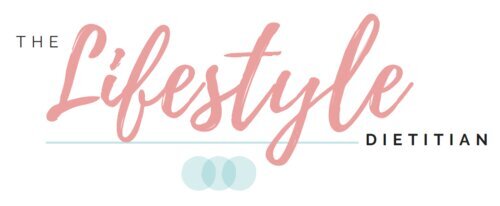Common mistakes to avoid on a low FODMAP diet
Bloated, gassy, constipated or always running to the nearest bathroom? If you struggle with any of these and raised this with your doctor (including Dr. Google), you’ve probably heard of the low FODMAP diet. In a nutshell, the low FODMAP diet is a tool to identify what foods trigger symptoms and how much you can tolerate. Yes, research shows the low FODMAP diet is effective for around 75% of those with IBS. But, it is not always easy to follow and there are a number of mistakes we often see that may leave you stuck with little to no relief. Here are four common mistakes to avoid when on the low FODMAP diet.
1. Misdiagnosing symptoms
Did you know the low FODMAP diet is not appropriate for all digestive conditions? In fact, it may even worsen an underlying medical cause! Before travelling down a low FODMAP route, get an accurate diagnosis from your doctor to ensure that you're treating the right condition. For example, symptoms of coeliac disease, inflammatory bowel disease, or other gastrointestinal disorders closely mimic those of IBS, but require entirely different treatments.
2. Neglecting non-FODMAP triggers
While the low FODMAP diet can be effective for managing IBS symptoms, FODMAPs are not the only triggers for digestive issues. Caffeine, alcohol, spicy foods, stress, lack of movement, undereating or skipping meals can all also exacerbate symptoms. Managing all potential triggers, not just FODMAPs, completes the entire puzzle of IBS management.
3. Cutting out entire food groups
The low FODMAP diet is not a long-term solution and is meant to be followed in three stages. High FODMAP foods are reduced for only a temporary set period of time in the first phase. The goal of the first phase is to lower the overall amount of FODMAPs consumed, not eliminate. Eliminating entire food groups is a sure-fire way to having nutritional deficiencies. More often than not, majority of foods only need to be tweaked to a smaller portion size. The key is to hit the sweet spot between the right portion of high FODMAP foods and adding in nutritionally comparable alternatives.
4. Going it alone
While it's possible to research and try the low FODMAP diet on your own, it’s also essential to work with a team of healthcare professionals who specialise in digestive health. Probably not a surprise, but this should include an Accredited Practising Dietitian to ensure your eating pattern is personalised to your specific needs, you are meeting all of your nutritional requirements, you are maintaining as much food variety and enjoyment as possible and non-diet strategies are also explored.
By avoiding these common mistakes, you'll be well on top of the first step to navigating the low FODMAP diet and managing your symptoms. Be patient and kind to yourself throughout the process - food is meant to be enjoyed, even when following a therapeutic diet. And remember, the low FODMAP diet is just one strategy of many to manage your symptoms and is only a short-term process. If you are overwhelmed and not getting symptom relief, book in with one of our Accredited Practising Dietitians. We listen to your story, provide compassion and empathy and support you in developing an individualised plan to manage your symptoms.

